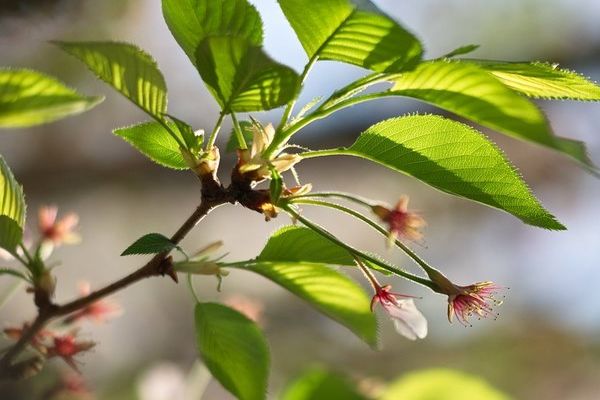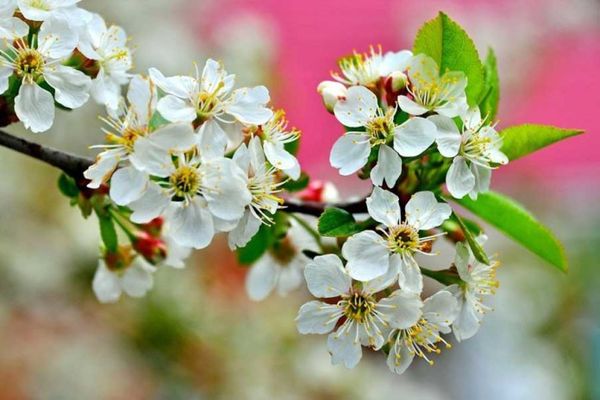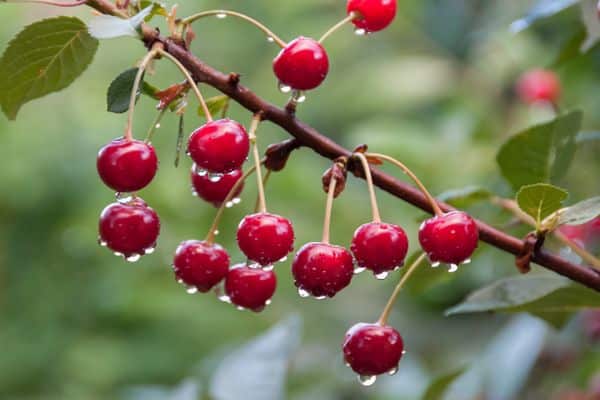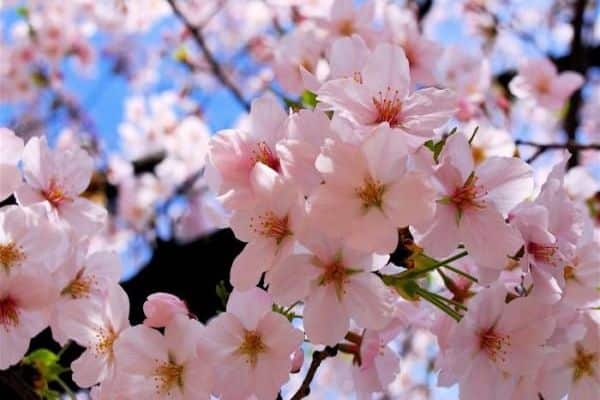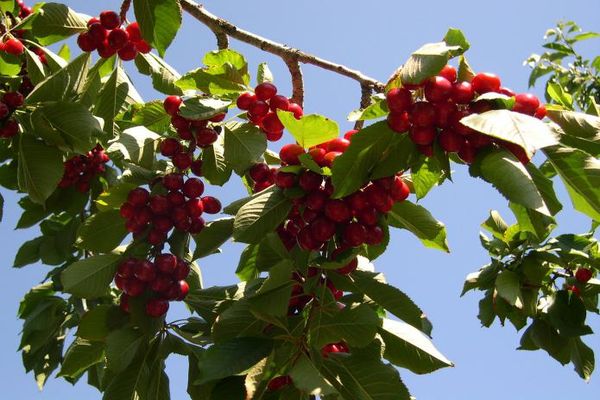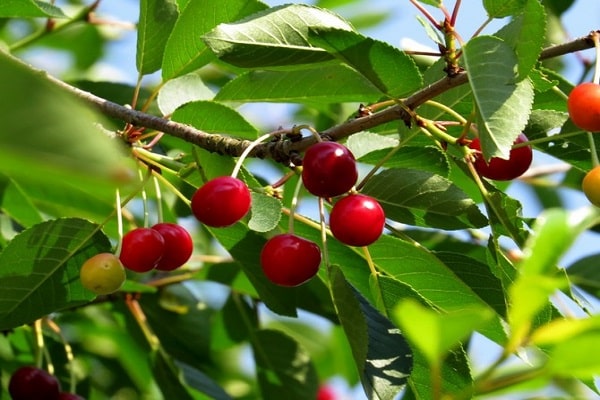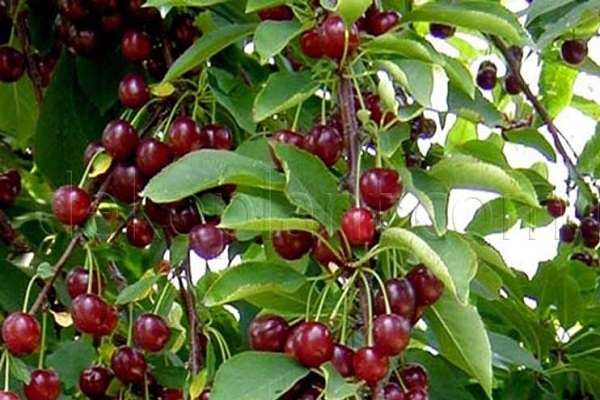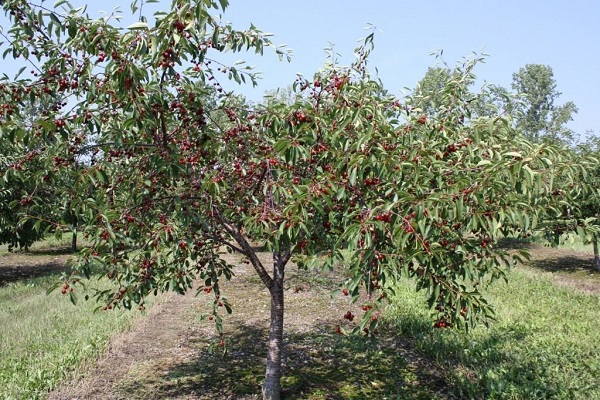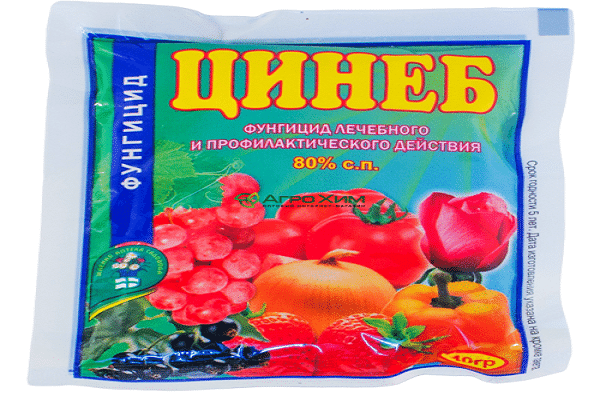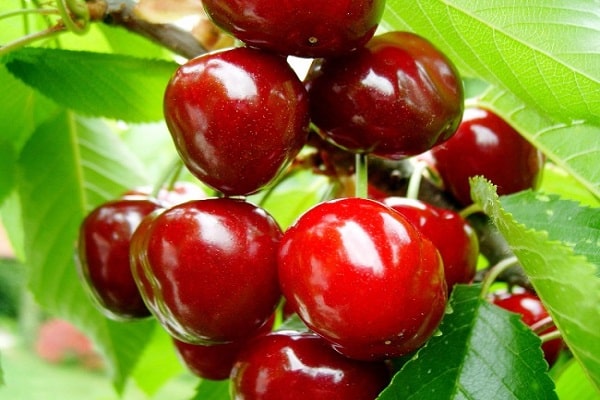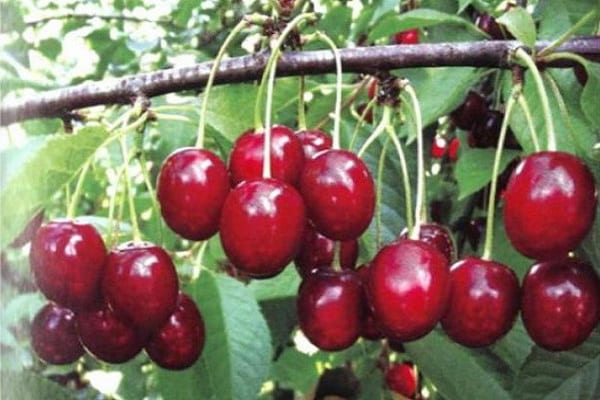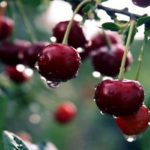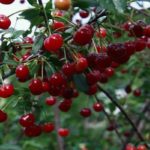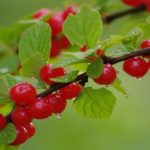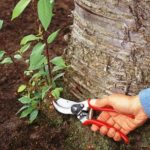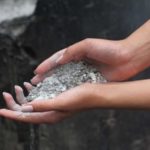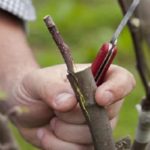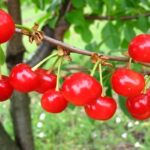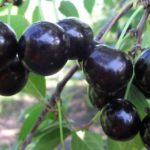Cherry is a popular plant among summer residents and simply fruit lovers. The juicy fruits make excellent jam, compote, jam and wine. However, it happens that a tree that is unpretentious in care stops producing crops. There are many reasons for this, ranging from bad weather to improper care. Why cherries do not bear fruit, and what needs to be done to correct the situation, further.
- Main reasons
- Lack or deficiency of pollination
- Unfavorable weather
- Improper planting and care
- Self-sterile variety
- Errors in cutting and shaping
- Damage by diseases and pests
- Old or too young tree
- How to make cherries bear fruit
- Symptoms and characteristic causes of falling unripe fruits
- Due to lack of moisture
- Wrong fertilizer
- Due to illness
- What needs to be done to preserve the harvest
- Preventive measures for good fruiting
Main reasons
The most common reasons for the lack of berries in cherries are:
- Pollination deficiency or lack thereof.
- Unfavorable climatic conditions.
- Improper planting and care of seedlings.
- Self-sterile variety.
- Improper pruning and shaping of the tree.
- Pests and diseases.
- Plant age.
Each of these reasons can affect the yield of the fruit, so you need to know how to properly grow a fruit plant in order to delight yourself and others with tasty and juicy fruits every year.
Lack or deficiency of pollination
In the case when a fruit tree blooms profusely but does not bear fruit, most likely the reason for this is a lack of pollination. Among the cherry varieties, more than half are self-sterile. This means that when a flower is pollinated by its own pollen or pollen from a tree of the same variety, 95% of the flowers will not bear fruit.
To avoid this, it is imperative to plant different varieties of cherries nearby. However, it happens, and this does not help. The reason is that not all cherry varieties pollinate each other well. It is recommended to seek advice from a specialist in order to plant the right tree nearby.
Pollinators need to be attracted, for this in the spring, during flowering, spray the flowers with water with the addition of granulated sugar (a tablespoon of sugar per liter of water).
Unfavorable weather
Climatic conditions can also affect the formation of fruit from a fruit tree. Even when the cherry tree has bloomed profusely, but there is sudden frost, heavy rains, or persistent heat and drought, there may be no harvest at all.
Smoky fires around an area with trees will help in case of frost.Thanks to the smoke, the air warms up and saves the ovaries from frost. And to save them from drought or high humidity, plants are stimulated by treatment with a solution based on boric acid (one tube of acid per 10 liters of water).
To facilitate the evaporation of moisture, it is necessary to loosen the soil around the plants, and during drought, water daily in the evening.
Improper planting and care
The annual yield of cherries is also affected by its location on the site. When planting a fruit tree, you need to pay attention to the following:
- In order to subsequently propagate cherries on the site, it is necessary to purchase a seedling with grafting.
- Cherry grows and bears fruit in neutral sandy loam soil. Do not plant the tree in infertile swampy soil or shady places.
- It is recommended to monitor the level of the root collar while planting the seedling; it should not be deeper than the soil level.
- An orchard requires proper care: regular watering, loosening, fertilizing, mineral fertilizing and pruning.
If you neglect the growing conditions of a fruit tree, over time it will weaken, the number of fruits will decrease, branches will no longer appear, and abundant gum will be noticeable along the crown.
Self-sterile variety
Most of the known cherry varieties are self-sterile. This quality means that cherries are not able to form ovaries without cross-pollination. For fruit formation, a neighboring pollinator variety is required. Therefore, the abundant spring flowering of a fruit tree does not guarantee a rich harvest.
To increase fruit production, the pollinator variety needs to be planted no further than within a radius of 25 meters. The next important point is the simultaneous flowering of two trees.
Important! Some of the cherry varieties are partially self-sterile. In principle, they can be fertilized by their own pollen, but for a bountiful harvest they need a pollinating neighbor.
Errors in cutting and shaping
Another reason why cherries do not bear fruit is a thickened crown. This is rarely observed, but it is worth considering the recommendations regarding timely pruning of the tree.
In early spring, in March, dry shoots, diseased, rotten and broken branches are pruned. And also those branches that grow deep into the crown. This procedure promotes the formation of new young branches that will bloom and bear fruit.
Common mistakes made when pruning a fruit tree:
- Trimming shoots with flowers. The lifespan of such branches is no more than 3 years, however, if you remove them in advance, the cherry will stop bearing fruit.
- Heavy pruning. It is not recommended to excessively remove young shoots from the tree - this leads to a general weakening of the plant, resulting in a decrease in the amount of harvest.
Damage by diseases and pests
The lack of juicy cherries provokes diseases. The most common of them are coccomycosis and moniliosis.
Coccomycosis can be identified by the presence of small red spots on the leaves of the tree. The disease begins to appear in the last weeks of May. As a result of infection, diseased leaves quickly dry out, curl into a tube and fall off.
Moniliosis. Young leaves, flowers, ovaries, as well as fruits on an infected plant dry out. The catalyst for the development of the disease is increased moisture during cherry blossoms.
In order to prevent plants from becoming infected with diseases, it is recommended to promptly prune damaged and dry branches, as well as destroy pest nests.
Diseases are often spread by pests, these include:
- Cherry weevil. It not only contributes to the infection of the tree with the disease, but also affects the flowers and ovaries of cherries.
- Codling moths and aphids.
To avoid the appearance of harmful insects, it is necessary to carefully inspect fruit trees. If the first signs of pests or various diseases are detected, take the necessary measures immediately.
Old or too young tree
Early-fruiting cherry varieties begin to bear fruit in the third year after planting, others - in the fourth. If after the specified period the plant does not bear fruit, you need to look for the cause of the problem.
An adult cherry bears fruit up to 15 years of age (with good care - up to 20 years). Therefore, when an old tree ceases to produce juicy fruits, it must be replaced.
How to make cherries bear fruit
When the cherry stops bearing fruit, having ruled out all possible causes of trouble, gardeners increase the plant’s productivity in the following ways:
- In the spring, when young leaves bloom, fertilizers are applied at the root of the tree.
- During the period of bud formation, the tree is sprayed with a solution containing boric acid. After the flowers bloom, spraying is repeated.
Symptoms and characteristic causes of falling unripe fruits
It happens that gardeners never have time to harvest juicy cherries. The reason for this is the shedding of ovaries and unripe berries. What causes this phenomenon? There are several reasons.
Due to lack of moisture
Insufficient humidity as a result of bad windy weather and lack of rain. Due to this, the plant does not have enough mineral elements for the formation of ovaries and ripening of berries. When a lump of earth taken near the crown of a fruit tree easily crumbles in your hand, this is a clear sign of water deficiency.
To correct the situation, cherries need to be watered abundantly. The right time for watering is after sunset. Grooves are dug around the tree trunk and water is poured into it. The amount of liquid should be enough to wet the ground to a depth of more than 40 centimeters. Watering can be combined with fertilizers.
Wrong fertilizer
Another reason for the premature shedding of green cherry berries is considered to be improper fertilizing with microelements or increased acidity of the soil on the site.
For this reason, the plant is not able to feed all the formed ovaries and fruits, and the lack of lime provokes the impossibility of seed formation.
To correct the situation, in the first case it is necessary feed the cherry tree mineral fertilizers or prepare a special mixture. To do this, you need to mix potassium sulfate nitrate with superphosphate. Dosage – 20 grams per square meter (can be dissolved in water or simply scattered).
As for soil acidity, you should water the soil around the trees well with a solution of ash or chalk.
Due to illness
In addition to the above diseases, cherry tree drops unripe fruits as a result of infection with clasterosporia. The disease begins with the appearance of brown spots on the leaves, then holes form and the leaves fall off. When the infection spreads to the fruits or ovaries, they dry out and fall off.
To avoid this, when the first signs appear, you need to get rid of the affected branches. For prevention, it is recommended to spray cherries with Bordeaux mixture after flowering.
What needs to be done to preserve the harvest
In order for a rich harvest of juicy cherry berries to form and ripen after the flowering period, it is necessary to systematically care for the plant:
- Water when there is persistent drought and lack of rain outside.
- Take timely measures to trim dry, diseased, pest-damaged and unnecessary shoots.
- Apply fertilizer to the fruit tree. The presence of various mineral fertilizers in the soil helps to increase cherry yields.
- Carry out prevention against pests and diseases.
Preventive measures for good fruiting
To maintain and increase the yield of cherries, phosphorus-potassium fertilizers will not be superfluous. But nitrogen fertilizer must be limited.
If it becomes noticeable that the tree has begun to bloom poorly and bear little fruit, it is recommended to stop manure fertilization. It does not allow the plant to prepare for the period of winter cold and provokes incomplete maturation of buds and shoots.
To prevent moniliosis, it is recommended to spray cherries with copper-containing preparations or a solution of copper sulfate (100 grams per 10 liters of water).
It is necessary to remember that the treatment of fruit plants with chemicals is carried out strictly according to the instructions. Also, during spraying, it is necessary to use respiratory protection and gloves.

